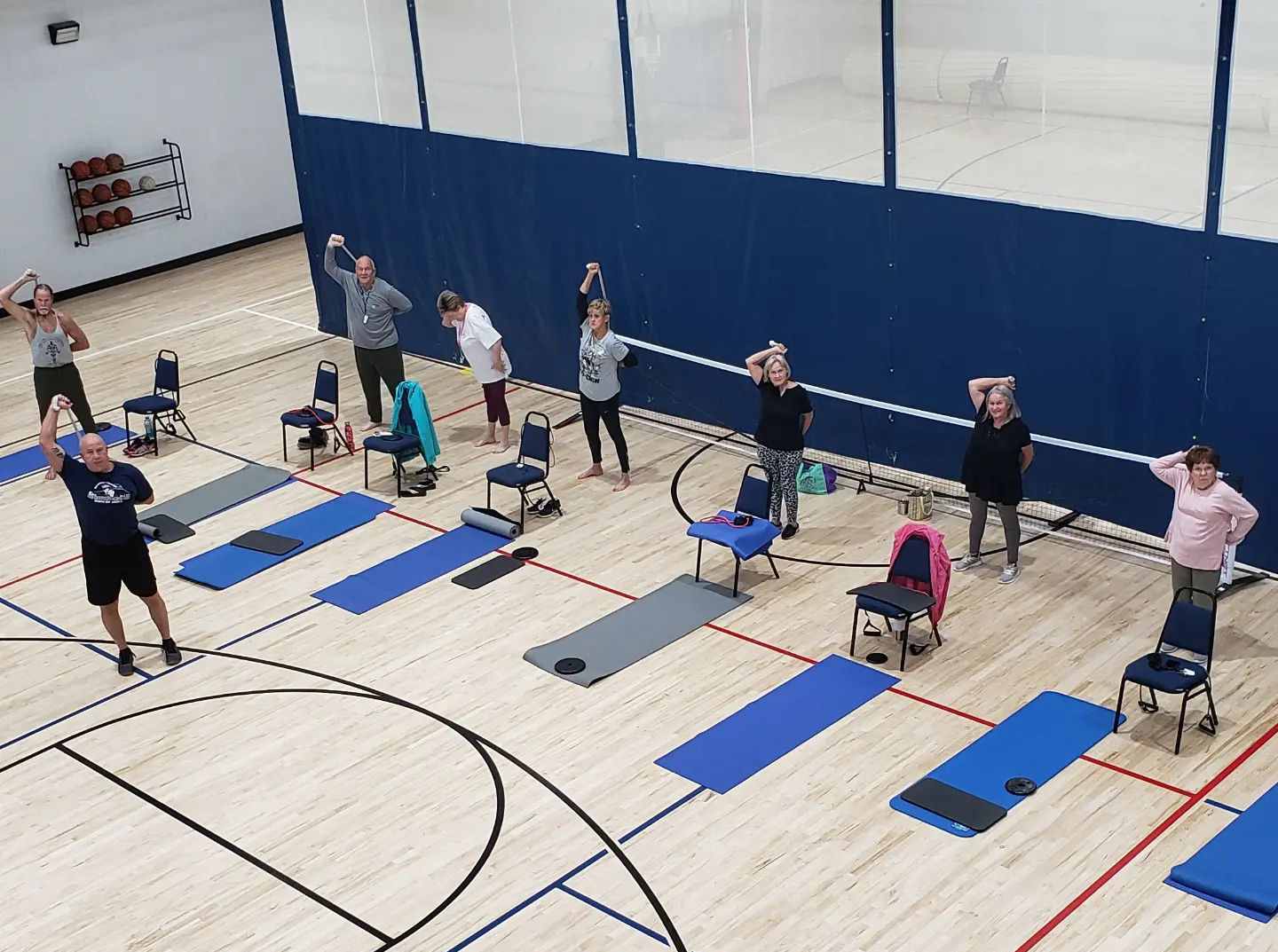
Mobility is the body’s ability to move freely and with ease; being able to move a joint through its full range of motion. As you read, think about how you move through your day: you wake and set your feet off the bed; walk across the room, grab a cup of coffee and head to your favorite chair; you head out to work or to the pickleball court to start a raucous game of back and forth; later unload the groceries from your car. All these activities require mobility.
Mobility is different from flexibility and stretching in that mobility requires strength and motion through a joint, whereas flexibility and stretching are a static – not moving – elongation of the muscle. Unlike muscles, joints rely on movement because they have no direct blood supply. As movement takes place, synovial fluid in the bursa – small fluid filled sacs – washes away waste products that build up and compromises the integrity of the joint as well as provides lubrication. Movement then leaves the joint fed, washed, and lubricated.
As we age, our mobility begins to suffer due to a decrease in physical activity, as well as other various aging processes, and as a result so do our daily activities and energy levels. The great news is that mobility is “trainable.” Adding a consistent mobility training program is easy and can be fun, especially when joining a Joint Mobility class. When starting a mobility program, remember to take it slow at first and allow your body time to adjust. Be gracious with yourself as your mobility begins to increase over time. Just like with all exercise programs, mobility is also scalable. As your movements become more fluid with larger ranges of motion, you can move in new ways and try more challenging mobility exercises and routines.
No matter where you start, mobility training helps to ease pain and stiffness, especially for those with arthritis. It increases coordination, proprioception (the ability to know where and how your body is oriented in your surroundings), balance, and range of motion.
Ways to improve mobility:
- Perform Range-of-Motion exercises regularly – moving each joint in every direction – up, down, side to side, rotational, figure-8, in, and out.
- Strengthen the muscles around the joint by adding resistance training exercises – Mobility requires strength to move through the range of motion. Strengthening the muscles surrounding the joint is also important for injury prevention.
- Take breaks – Get up and move every hour or two. Sitting in place for long stretches of time increases the likelihood of experiencing stiffness and mobility loss.
When you start to feel stiff, your mobility is lacking and that is when ‘age’ starts to settle in your body. Partnered with regular exercise, diet, and preventive care, adding a mobility routine will keep you stronger and steadier with fewer aches and more stamina which lays the foundation for living a healthy and independent life.
Joint Mobility classes are held at Northern Wellness & Fitness Center, located at 280 North Pointe Blvd, Mount Airy, NC 27030, Mondays 10:00 – 11:00 a.m. and Tuesdays and Thursdays from 9:00 – 10:00 a.m. The class features movements that move the joints through their full range of motion, feeding, washing, and lubricating the joint. This class is known to restore health and lost function to the joints and connective tissue of the body. Cost is included with Membership or $10 drop-in rate.
About the Author: Rachael Williams is Lead Instructor and trainer at Northern Wellness & Fitness Center. For more information about Joint Mobility classes, call (336) 783-0399 or visit northernwellnesscenter.com.

